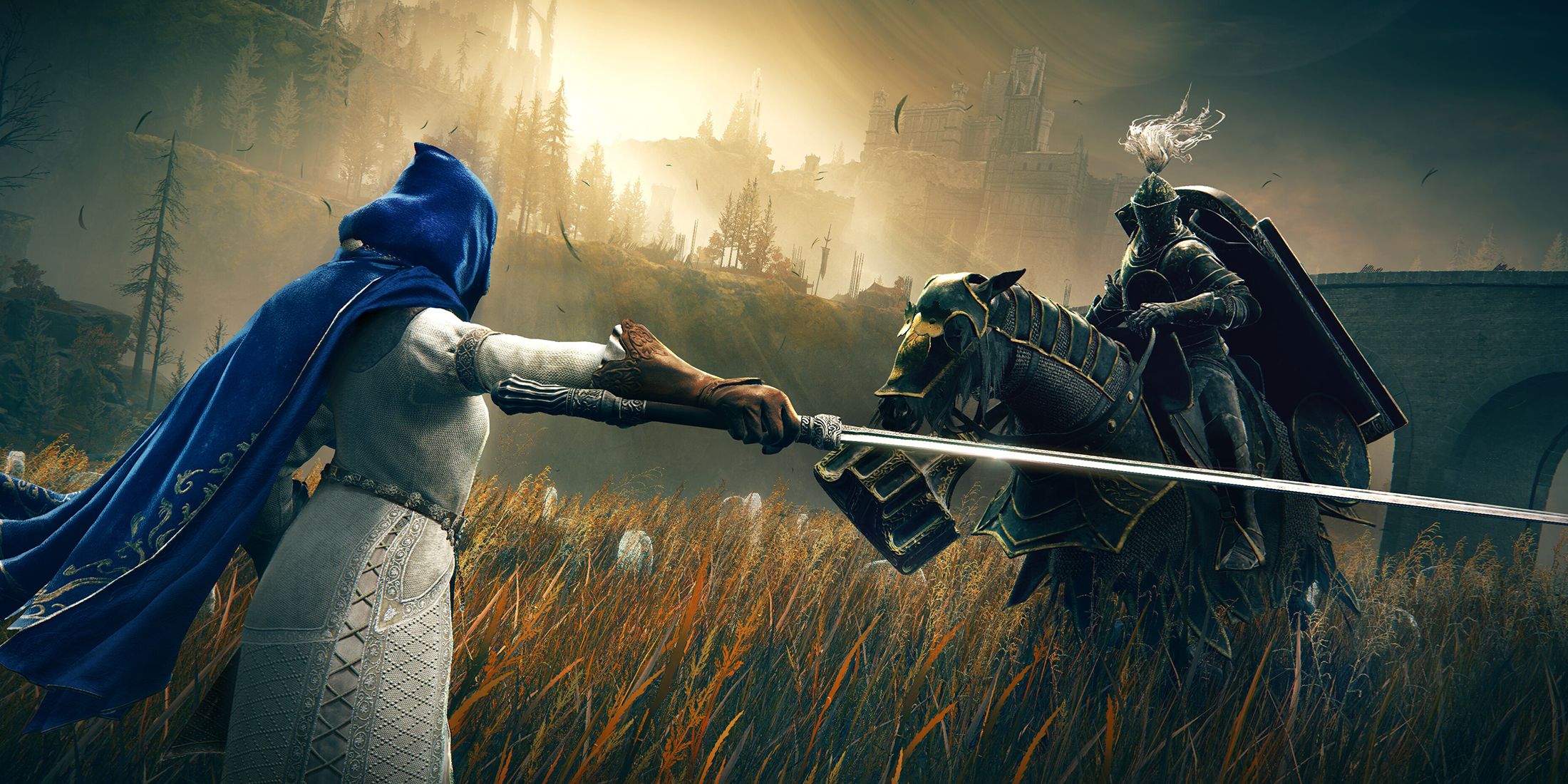"Assassin's Creed: 10 Historical Changes"
Ubisoft has once again activated the Animus, this time transporting players back to Japan's Sengoku Period with Assassin's Creed Shadows. This latest installment introduces us to historical figures from 1579, such as Fujibayashi Nagato, Akechi Mitsuhide, and Yasuke—the African samurai who served Oda Nobunaga. As with previous games in the series, these characters are intricately woven into a narrative that blends fact with fiction, exploring themes of revenge, betrayal, and murder. While the game might humorously suggest that Yasuke needed to gather XP to wield a gold-tier weapon, it's all part of the series' charm and approach to storytelling.
Assassin's Creed is firmly rooted in the genre of historical fiction, crafting a science fiction conspiracy saga around a secret society aiming for global domination through the mystical powers of a pre-human civilization. Ubisoft meticulously researches to create immersive open-world environments, yet it's crucial to understand that these games are not meant to serve as history lessons. The developers creatively alter historical facts to enhance the narrative, resulting in numerous "historical inaccuracies" that enrich the gameplay experience. Let's explore ten standout instances where Assassin's Creed has boldly rewritten history.
The Assassins vs Templars War
 The iconic conflict between the Assassins and the Templars is a cornerstone of the Assassin's Creed universe, yet there is no historical evidence supporting such a rivalry. The Order of Assassins, founded in 1090 AD, and the Knights Templar, established in 1118, did not engage in a centuries-long war as depicted in the games. Both orders were active during the Crusades, but any interaction was minimal and lacked the ideological opposition portrayed in the series. The narrative of a continuous battle between these two groups is a purely fictional construct, inspired by conspiracy theories surrounding the Templars.
The iconic conflict between the Assassins and the Templars is a cornerstone of the Assassin's Creed universe, yet there is no historical evidence supporting such a rivalry. The Order of Assassins, founded in 1090 AD, and the Knights Templar, established in 1118, did not engage in a centuries-long war as depicted in the games. Both orders were active during the Crusades, but any interaction was minimal and lacked the ideological opposition portrayed in the series. The narrative of a continuous battle between these two groups is a purely fictional construct, inspired by conspiracy theories surrounding the Templars.
The Borgias and their Superpowered Pope
 In Assassin's Creed 2 and its sequel, Brotherhood, the protagonist Ezio battles the Borgia family, with Cardinal Rodrigo Borgia revealed as the Templar Grand Master. Historically, Rodrigo became Pope Alexander VI, but the notion of him using a magical Apple of Eden to control humanity is purely fictional. The games also paint the Borgias as villainous Renaissance gangsters, with Cesare Borgia depicted as an incestuous psychopath—a characterization unsupported by historical evidence, which instead suggests a more complex figure.
In Assassin's Creed 2 and its sequel, Brotherhood, the protagonist Ezio battles the Borgia family, with Cardinal Rodrigo Borgia revealed as the Templar Grand Master. Historically, Rodrigo became Pope Alexander VI, but the notion of him using a magical Apple of Eden to control humanity is purely fictional. The games also paint the Borgias as villainous Renaissance gangsters, with Cesare Borgia depicted as an incestuous psychopath—a characterization unsupported by historical evidence, which instead suggests a more complex figure.
Machiavelli, Enemy of the Borgias
 Assassin's Creed 2 and Brotherhood cast Niccolò Machiavelli as a key ally to Ezio and leader of the Italian Assassin's Bureau. However, Machiavelli's real-life philosophies and actions align more with supporting strong authority, contradicting the Assassin's Creed's fight against it. Additionally, he had a more favorable view of the Borgias than the games suggest, serving as a diplomat under Cesare Borgia and admiring his leadership.
Assassin's Creed 2 and Brotherhood cast Niccolò Machiavelli as a key ally to Ezio and leader of the Italian Assassin's Bureau. However, Machiavelli's real-life philosophies and actions align more with supporting strong authority, contradicting the Assassin's Creed's fight against it. Additionally, he had a more favorable view of the Borgias than the games suggest, serving as a diplomat under Cesare Borgia and admiring his leadership.
The Incredible Leonardo da Vinci and his Flying Machine
 Assassin's Creed 2 showcases a strong bond between Ezio and Leonardo da Vinci, accurately capturing da Vinci's charismatic nature. However, the game deviates from history by having Leonardo move from Florence to Venice in 1481, when he actually relocated to Milan in 1482. While the games bring da Vinci's designs to life, such as a machine gun and tank, there's no evidence these were built. The most fantastical element is Ezio's use of a flying machine, a concept da Vinci explored but never realized in reality.
Assassin's Creed 2 showcases a strong bond between Ezio and Leonardo da Vinci, accurately capturing da Vinci's charismatic nature. However, the game deviates from history by having Leonardo move from Florence to Venice in 1481, when he actually relocated to Milan in 1482. While the games bring da Vinci's designs to life, such as a machine gun and tank, there's no evidence these were built. The most fantastical element is Ezio's use of a flying machine, a concept da Vinci explored but never realized in reality.
The Bloody Boston Tea Party
 The Boston Tea Party, a pivotal event in the American Revolution, was a peaceful protest where no lives were lost. In Assassin's Creed 3, however, protagonist Connor turns it into a violent clash, single-handedly killing numerous British guards. The game also suggests Samuel Adams orchestrated the event, despite historians' uncertainty about his involvement. This reimagining transforms a historical protest into a dramatic video game mission.
The Boston Tea Party, a pivotal event in the American Revolution, was a peaceful protest where no lives were lost. In Assassin's Creed 3, however, protagonist Connor turns it into a violent clash, single-handedly killing numerous British guards. The game also suggests Samuel Adams orchestrated the event, despite historians' uncertainty about his involvement. This reimagining transforms a historical protest into a dramatic video game mission.
The Lone Mohawk
 Assassin's Creed 3's protagonist, Connor, a Mohawk, fights alongside the Patriots against the British, contrary to historical alliances where the Mohawk sided with the British. While rare instances like Louis Cook, a Mohawk who fought with the Continental Army, exist, Connor's story is a "what if" scenario that explores the internal conflict of choosing sides in a war that affected his people deeply.
Assassin's Creed 3's protagonist, Connor, a Mohawk, fights alongside the Patriots against the British, contrary to historical alliances where the Mohawk sided with the British. While rare instances like Louis Cook, a Mohawk who fought with the Continental Army, exist, Connor's story is a "what if" scenario that explores the internal conflict of choosing sides in a war that affected his people deeply.
The Templar Revolution
 Assassin's Creed Unity's portrayal of the French Revolution attributes its causes to a Templar conspiracy, suggesting the monarchy and aristocracy were victims rather than the cause of public revolt. The game's depiction of a Templar-induced food crisis oversimplifies the complex factors like natural disasters that led to famine. Additionally, Unity focuses on the Reign of Terror as the entire revolution, ignoring the broader context and multiple causes.
Assassin's Creed Unity's portrayal of the French Revolution attributes its causes to a Templar conspiracy, suggesting the monarchy and aristocracy were victims rather than the cause of public revolt. The game's depiction of a Templar-induced food crisis oversimplifies the complex factors like natural disasters that led to famine. Additionally, Unity focuses on the Reign of Terror as the entire revolution, ignoring the broader context and multiple causes.
The Controversial Killing of King Louis 16
 Assassin's Creed Unity portrays the vote on King Louis 16's execution as a close call influenced by a Templar, whereas historically, the vote was decisively in favor of execution. The game also downplays the King's treasonous actions and the widespread public anger towards the aristocracy, presenting a softer view of the monarchy.
Assassin's Creed Unity portrays the vote on King Louis 16's execution as a close call influenced by a Templar, whereas historically, the vote was decisively in favor of execution. The game also downplays the King's treasonous actions and the widespread public anger towards the aristocracy, presenting a softer view of the monarchy.
Jack the Assassin
 Assassin's Creed Syndicate reimagines Jack the Ripper as a rogue Assassin attempting to take over the London Brotherhood. Historically, Jack the Ripper was a notorious serial killer, but the game adds a layer of intrigue by tying him to the Assassin-Templar conflict. This narrative twist exemplifies the series' approach to filling historical gaps with fictional elements.
Assassin's Creed Syndicate reimagines Jack the Ripper as a rogue Assassin attempting to take over the London Brotherhood. Historically, Jack the Ripper was a notorious serial killer, but the game adds a layer of intrigue by tying him to the Assassin-Templar conflict. This narrative twist exemplifies the series' approach to filling historical gaps with fictional elements.
The Assassination of the Tyrant Julius Caesar
 Assassin's Creed Origins reinterprets the well-documented assassination of Julius Caesar, portraying him as a proto-Templar whose death is framed as a victory against tyranny. In reality, Caesar was popular among the Roman people for his reforms, and his assassination led to the collapse of the Republic and the rise of the Roman Empire, contradicting the game's narrative of preventing global domination.
Assassin's Creed Origins reinterprets the well-documented assassination of Julius Caesar, portraying him as a proto-Templar whose death is framed as a victory against tyranny. In reality, Caesar was popular among the Roman people for his reforms, and his assassination led to the collapse of the Republic and the rise of the Roman Empire, contradicting the game's narrative of preventing global domination.
The developers of Assassin’s Creed go to great lengths to integrate authentic historical elements into their games, but as we've seen, historical accuracy often takes a backseat to narrative creativity. This is perfectly acceptable, given that the series is classified as historical fiction rather than a historical documentary. What are your favorite instances of Assassin's Creed bending the truth? Share your thoughts in the comments below.
- 1 STARSEED Update: Codes for January 2025 Released Feb 25,2025
- 2 Pokémon TCG Pocket: Wonder Pick Date, Time, and Promo Cards – February 2025 Mar 03,2025
- 3 How to Get All Ability Outfits in Infinity Nikki Feb 28,2025
- 4 Black Myth: Wukong Tops Steam Charts Days Before its Launch Jan 07,2025
- 5 Project Zomboid: All Admin Commands Jan 05,2025
- 6 Silent Hill f: first big trailer and details Mar 22,2025
- 7 Call of Duty Announces Black Ops 6 Updates Feb 08,2025
- 8 inZOI, a Korean Sims-Like, Delayed to March 2025 Mar 01,2025
-
Budgeting & Investing: Your Guide to Financial Apps
A total of 9
-
Addictive Hypercasual Games for Quick Play
A total of 10
-
Best Role Playing Games for Android
A total of 10






























